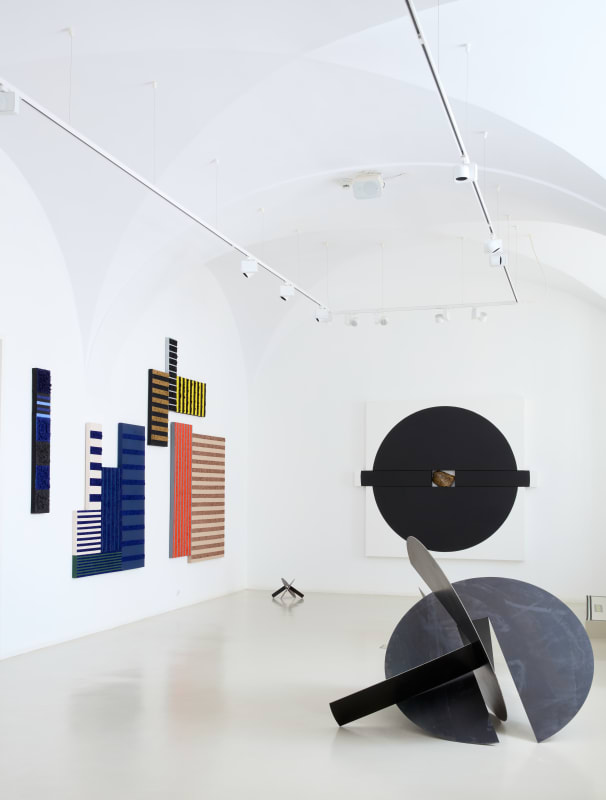In the works of Daniel Mattar and Antonio Bokel, we encounter two distinct approaches to manipulating the geometry of shapes, yet also imbued with a poetic aura that sets them apart. In one way or another, the form seems to cross points of contact in their processes of work and research, prominently present in gestures closely linked to the act of creation that reveal solutions and inquiries that transcend mere formal concerns, or sometimes verge on an apparent informality. In this aspect, these gestures, so to speak, recall the history of 20th-century art, revisiting practices in painting and sculpture that question methodologies and various compositional variants typified in these disciplines.
The exhibition is, thus, a meeting of visual propositions that manifest through a materiality rooted in the use of media and the hands-on nature of their execution. The idea of “passage,” which opens the title of this project, summons an ephemeral possibility of encountering empathies and poetics that construct the exhibition as a unique, and thus transient, occasion. The “mode of reconstruction” that follows in the title, is a call to the viewer to listen and observe the various relationships with the space that develop within the exhibition.
In Daniel Mattar's work, there unfolds a fruitful construction of grids and formats between porous matter and the subtle application of an economical palette, revisiting the grid, modernist on one hand, and on the other, more metaphysical, or musical. In this respect, the titles of his works underscore, through words, a duality such as "Duet," pointing to a poetic reading of his process as two subjects meeting, and not just a technical identification of a work composed of two elements, which more commonly might be called a diptych. It is in the composition that this binomial arises, thus assigned to the conjunction of two patterns that transition through rhythm and difference in textures, markedly emphasized by the application of pigment on wood dust, a material that, in a very subtle way, draws lines of shadow on the flat background of the painted support. However, the support is, so to speak, the horizon of an abstract landscape, like a fragmented vision of floating shapes that move within the frame of each of his visual constructions. Other examples, such as "Scale," or "Compass," establish a play with language between the musical vocabulary, which does not escape the notion of time, and visual language. The scale, in the methodical geometry of color use and its composition, unfolds in another work that establishes a rhythm in the construction of elements and rhythms that compose it.
Antonio Bokel has paid special attention to the deconstruction of the circle in the course of his work, treating this perfect and metaphysical shape as one of many possibilities to return to sculptural structures that unfolded the geometric composition in scales and metrics of apparent formal balance, between the contrast of black, and the chromatic tension, sometimes on loose canvases of considerable size. In this exhibition, the artist returns to a medium and notable scale, provoking simple changes, or shifts, of the various three-dimensional elements that reconnect painting and sculpture, as can be observed in the large black circle, “untitled”, and that develops other geometric figures, such as the line or the square, Euclidean geometry that Bokel continuously questions in his work. These are spatial and operational concepts that affect the vision, and thus the body that observes, such as in the presence of a modular sculpture, like an amplified puzzle, which suggests an idea of movement, or of use and play, but that refers to an almost monumental impossibility of industrial construction.
In this logic of play, the materials and exhibition devices are absorbed by the process of constructing the work itself, and what was once a passe-partout with a technical function of framing a drawing, or another record, is now a relief, close to sculpture, but decidedly a geometric construction, revolutionizing the form in its previous functionality. It is in scale and proportion that it questions a way of seeing, like a memory of the neo-concrete or constructivist history. Yet, it transgresses the modernist canons that it systematically revisits.
The exhibition is a field of reconstruction among neighborhoods and poetics that, in a not obvious way, proposes a conversation, like a passage through other fields of possibilities between the hand and the material, memory and experience.
João Silvério, 2024



